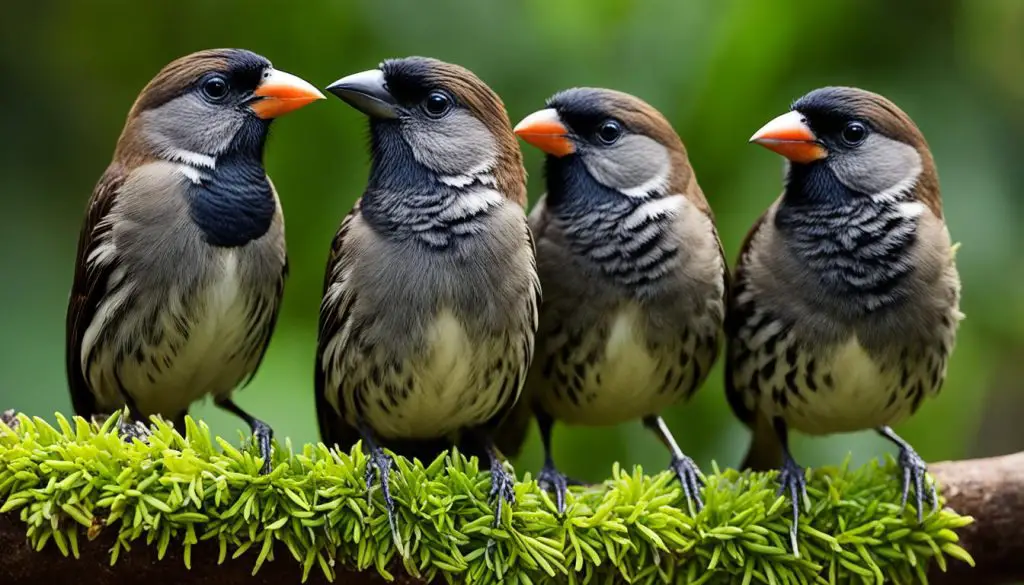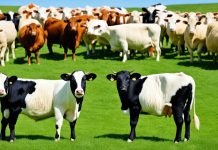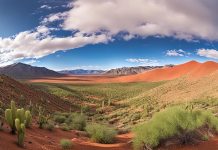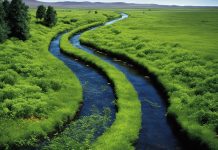
As a nature enthusiast and a fervent advocate for the wonders of evolution, I’ve always been intrigued by the evolutionary consequences of environmental changes. There’s something truly fascinating about witnessing the power of nature as it nudges organisms along the path of ecological adaptation and speciation. It reminds me that we’re part of a dynamic, ever-changing tapestry of life, where environmental factors wield the brush that paints new species into existence. Let’s dive into the riveting world where environmental factors influencing new species formation play the critical role of architect in Earth’s immense biodiversity.
Key Takeaways
- Understanding how environmental shifts serve as a foundation for ecological adaptation.
- Exploring the role of environmental changes in driving the diversification of life.
- Discovering the processes whereby new ecological niches lead to the emergence of novel species.
- Recognizing the profound impacts of abiotic and biotic factors in shaping evolutionary paths.
- Examining the significance of geographic and reproductive isolation in speciation.
Understanding Speciation and the Influence of Environmental Factors
As we delve deeper into the intricacies of species evolution, it’s imperative to acknowledge the enduring insights of Charles Darwin and their modern interpretations. Current scientific inquiries build upon his foundational principles, deepening our grasp of genetic changes in response to environmental variations and the ensuing ecological niche shifts.
The Fundamentals of Speciation: Darwin’s Insights and Modern Interpretations
In my exploration of speciation, I’ve come to appreciate the complex dance between organisms and their shifting environments. From the sympatric to allopatric spectrums, it’s clear how species are shaped by the contexts they inhabit. Modern research has added nuance to these categories, providing a richer understanding of the speciation process.
Environmental Change as a Catalyst for Genetic Divergence
The role of environmental shifts in species diversification cannot be overstated. Whether it be climatic fluctuations or alterations in habitat structures, these changes demand a genetic response from organisms. Such adaptations may produce new species entirely, a testament to the resilience and inventiveness of life on Earth.
Examining the Role of Geographic and Reproductive Isolation
For species such as the Tennessee cave salamanders and Rhagoletis pomonella flies, geographic isolation has been a pivotal force instigating ecological niche shifts. These geographic constraints, coupled with the independent genetic journeys of separated populations, fuel the emergence of reproductive barriers—giving birth to new evolutionary paths. Through my research and engagement with scholarly studies, I’ve learned that the role of environmental shifts in species diversification is a recurrent theme in evolutionary biology, echoed across the planet’s boundless biodiverse tapestry.
Case Studies of Speciation in Response to Environmental Change

As a copywriting journalist deeply intrigued by nature’s profound responses to environmental change, I’m fascinated by how new species development is steadily reshaping our world. These transformations are not just random; they are the outcome of microevolutions guided by environmental stimuli. By examining specific case studies, we can see the impact of environmental change on species evolution and the triggers for these incredible speciation processes.
Insights from the Galapagos: Darwin’s Finches and Beyond
I’ve always been captivated by how the Galapagos finches are a living demonstration of adaptive success. Darwin’s observations here have become emblematic in our understanding of natural selection. Each finch species has a beak adapted to its lifestyle, a direct response to the environmental triggers present on their unique island habitats. This has allowed them to exploit different ecological niches and flourish.
Adaptive Radiation in Cichlid Fishes due to Visual Adaptation and Sexual Selection
The cichlid fishes, however, are a testament to environmental change and new species development below the water’s surface. Their dazzling diversity is a result of visual adaptation to underwater environments and intricate patterns of sexual selection, resulting in an impressive array of species each distinctively tuned to their ecological settings.
Polyploidy in Plants: An Evolutionary Response to Environmental Stressors
Moreover, the world of flora isn’t left behind in this spectacle. Polyploidy in plants represents an evolutionary leap, a genetic doubling that renders them robust against environmental stressors. This process has contributed immensely to plant diversification and is a key factor in environmental-driven speciation events.
Here is a comparative look at the speciation mechanisms in these divergent organisms:
| Organism | Speciation Mechanism | Environmental Trigger | Developmental Outcome |
|---|---|---|---|
| Galapagos Finches | Ecological Isolation | Island-specific dietary resources | Diversified beak structures |
| Cichlid Fishes | Sensory Drive/ Sexual Selection | Underwater light environments | Reproductive isolation and color diversification |
| Flowering Plants | Polyploidy | Environmental Stressors | Rapid genetic changes and reproductive barriers |
My passion for the natural world fuels my fascination with these species as vivid examples of how the wheels of nature turn—slowly grinding stones into sands of time, yet also capable of dramatic, pivotal leaps in response to the environmental change impacting our planet.
Human Influence on Evolutionary Processes and Future Prospects
As I delve into the profound effects of our species on the natural world, it’s apparent that human actions are reshaping the evolutionary narrative. We’re not just passive observers on this stage; our impact on evolution is both direct and far-reaching. The way we alter environments through our activities sets in motion a series of evolutionary consequences that redefine the existence of numerous other species. This section will explore these dynamics and consider what the future might hold if current trends persist.
The Impact of Human-Induced Climate Change and Habitat Alteration
Anthropogenic climate change and habitat loss are prime examples of how human activities influence evolution. Consider the shifting climates that compel species to migrate or adapt to new conditions. Take, for instance, the melting Arctic ice affecting polar bears, forcing them to find new hunting strategies. Habitats are also altered, sometimes irreversibly. Deforestation for agriculture and urban expansion reduces biodiversity, pushing some species to the brink of extinction and demanding dramatic adaptive responses from others.
Anthropogenic Selection: The Rise of Adaptations to Urban Environments
Human-induced selective pressures on species are evident in urban settings. Birds with shorter wingspans thrive in cities where maneuvering around buildings is essential. Insects like the peppered moth saw changes in their coloring to match soot-covered surfaces during the industrial era. These examples underline the reality of anthropogenic selection, where the artificial environments we’ve created become the new stages for evolutionary plays. My own observations of urban wildlife, including increasingly common coyote sightings in metropolitan areas, underscore how flexible and resilient nature can be.
Potential Consequences of Reduced Genetic Diversity Due to Human Activities
The reduction of genetic diversity, a side-effect of our shaping of nature, is particularly troubling. As noted by researchers like Niemiller et al., this dwindling genetic wellspring can weaken species’ ability to cope with further changes, threatening their survival. If the current trends in biodiversity loss continue, we may see an impoverishment of nature’s genetic library—a resource that has taken eons to compile and one that holds countless solutions to challenges we’ve yet to face. It’s incumbent upon us to heed these warnings and reconsider our role in scripting the future of evolution.
FAQ
Q: How does an environmental change lead to the development of a new species?
A: Environmental change can prompt ecological adaptation and speciation by altering the conditions under which species live. The organisms may face new selective pressures that can lead to genetic divergence over time, especially if populations are geographically isolated, eventually resulting in new species that are better adapted to the altered environment.
Q: What insights on speciation did Darwin provide and how have modern interpretations built upon his work?
A: Darwin’s foundational work, “On The Origin of Species,” outlined the basic principles of natural selection and how environmental pressures could lead to the emergence of new species. Modern interpretations have expanded upon these ideas, detailing the genetic mechanisms of speciation and differentiating various types such as allopatric, sympatric, and parapatric speciation.
Q: How do environmental factors catalyze genetic divergence?
A: Environmental factors such as climate change, habitat fragmentation, and new ecological challenges catalyze genetic divergence by creating unique sets of selective pressures. These pressures may favor certain traits over others, leading to a gradual genetic shift within a population that can result in reproductive isolation and eventually a new species.
Q: Can you explain the role of geographic and reproductive isolation in speciation?
A: Geographic isolation occurs when populations of the same species are separated by physical barriers, while reproductive isolation refers to mechanisms that prevent different species from interbreeding. Both types of isolation can lead to speciation, as they prevent gene flow between populations and allow them to diverge genetically.
Q: What are some examples of species that have evolved in response to environmental change?
A: Darwin’s finches in the Galapagos Islands are a classic example, where different beak shapes evolved in response to the types of seeds available on different islands. Additionally, cichlid fishes in African lakes have diversified significantly due to visual adaptation and sexual selection. Polyploidy in plants is another example, where some species have developed multiple sets of chromosomes in response to environmental stressors.
Q: How has human-induced climate change and habitat alteration impacted species evolution?
A: Human activities such as burning fossil fuels and deforestation contribute to climate change and habitat alteration, which in turn shift species distributions and create new ecological challenges. These shifts force species to adapt to new environments, altering their evolutionary trajectory and sometimes leading to the development of new species.
Q: What adaptations are emerging due to anthropogenic selection in urban environments?
A: Due to anthropogenic selection, species are developing adaptations like increased tolerance to pollutants, the ability to navigate artificial lighting and noise, or changes in behaviors that allow them to exploit resources common in urban environments, such as food waste.
Q: What are the potential consequences of reduced genetic diversity due to human activities?
A: Reduced genetic diversity, as a result of human activities, can make species less resilient to environmental changes and threats such as disease. This loss of diversity can hamper a species’ ability to adapt and survive long-term, potentially leading to a higher risk of extinction and a decrease in overall biodiversity.


























